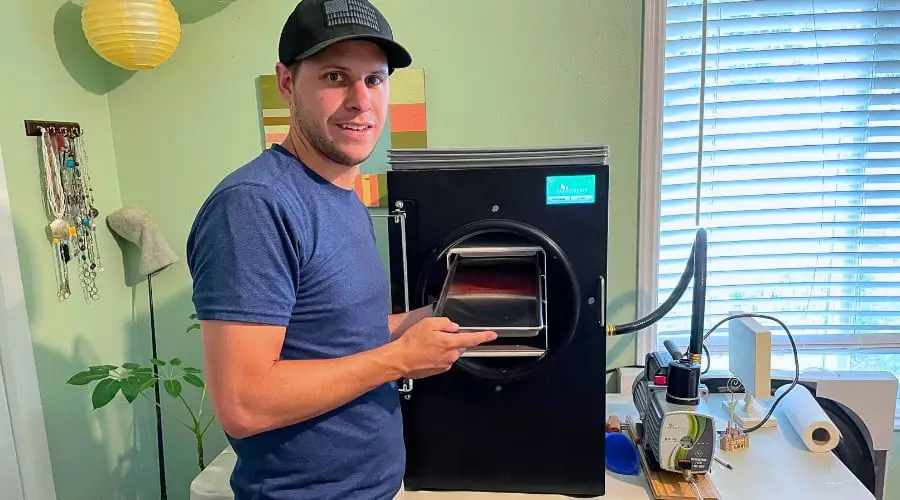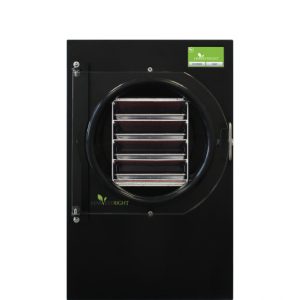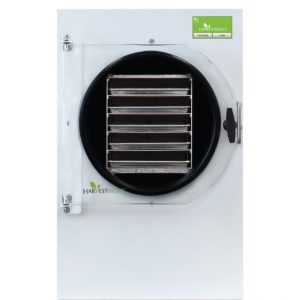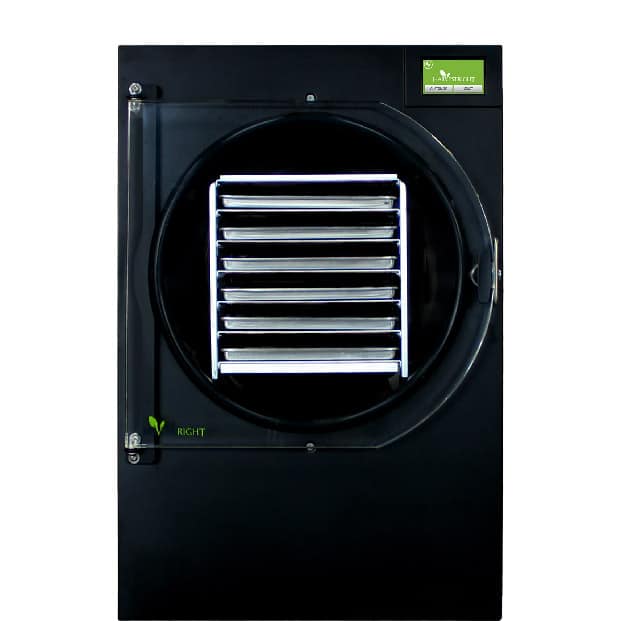“Are freeze dryers worth it?” was the first question I asked myself before buying a home freeze dryer. I found out it’s a game-changer for long-lasting, flavorful food, but it’s not without its costs.
In this article, I’ll help you know whether investing in a home freeze-dryer is worth the money. Jump down the page to use our freeze dryer cost calculator.
The premier provider of Home Freeze Dryers currently has deals saving $200 on small freeze dryers and $300 on medium, large, and extra-large freeze dryers (With FREE shipping in the United States and a premier pump is included).
If you are interested in buying a home freeze dryer please support us by using this link to visit Harvest Right’s website and order one soon to get the discount! We only recommend products we use and enjoy.
Are Freeze Dryers Worth It?
A home freeze dryer is worth it if you want long-term food storage and control over ingredients. You’ll save on freeze-dried meals and recoup the initial cost over time.
A home freeze dryer may not be worth it if you don’t plan to store food long-term or if the initial cost and maintenance are too high for your budget.
A freeze dryer has been worth the investment for me because of its unique benefits. It can preserve foods like dairy and eggs that other methods can’t. It also offers an alternative to pressure canning for low-acid foods.
Home freeze-dried food and meals are shelf-stable, lightweight, and have a longer safe storage life as well as cheaper over the long run.
I have owned a home freeze dryer for over 4 years now and here are the pros and cons that I have observed:
Pros of Owning a Home Freeze Dryer:
- Long-term savings. You can save money in the long run by buying ingredients in bulk and reducing food waste.
- Customization. You can create meals tailored to your dietary needs and preferences.
- Nutritional control. You know exactly what’s going into your food, ensuring higher nutritional value.
- Extended shelf life. Freeze-dried foods can last up to 25 years, making them excellent for long-term storage and emergency preparedness (see how to store freeze dried food).
- Quality and taste. Home freeze-dried foods keep better flavor and texture compared to some commercial options.
- Versatility. You can freeze-dry meats, fruits, vegetables, full meals, dairy products, herbs, and even make treats for pets (see everything that can and cannot be freeze-dried at home).
- Convenience. Building a stockpile of meals makes daily meal prep easier and quicker.
- Resale value. If you decide freeze-drying isn’t for you, these machines often have good resale value.
Cons of Owning a Home Freeze Dryer:
- High initial cost. The upfront investment is significant, ranging from $2,000 to $5,000.
- Operating expenses. Electricity costs can add up, and there may be occasional maintenance or part replacement.
- Space requirement. The machine takes up considerable space, which could be an issue in smaller homes.
- Time-consuming. The freeze-drying process can take 20-40 hours, plus additional time for food preparation and packaging.
- Learning curve. It takes time to learn how to use the machine and to troubleshoot any issues.
- Noise. Some models can be noisy, which might be disruptive depending on where you put the machine.
- Limited warranty. Most freeze dryers come with a limited-time warranty, so any issues after that period could be costly.
I’ve found owning a home freeze dryer to be rewarding. It’s given me complete control over the variety and customization of my long-term food storage. Plus, the more I use it, the more cost-effective it becomes.
Yet, buying a freeze-dryer may not fit the needs of everyone. If the cons hold a higher weight to your circumstances then it may not be worth the investment for you.
Top 8 Considerations Before Buying a Home Freeze Dryer:
- Initial Investment: The upfront cost of the freeze dryer, can range from $2,300 to $5,000.
- Freeze-Dried Food Costs: The price of raw ingredients you plan to freeze dry vs. pre-packaged freeze-dried meals.
- Operating Costs: Ongoing expenses like electricity and maintenance.
- Long-Term Savings: Potential to save money through bulk buying and reducing food waste.
- Shelf Life & Emergency Preparedness: The extended shelf life of freeze-dried foods and its usefulness in emergencies.
- Frequency of Use: How often you’ll actually use the machine.
- Customization & Nutritional Value: The ability to create custom, nutrient-rich meals.
- Time Commitment: The time needed for the freeze-drying process and maintenance.
Check out all freeze dryer options on Harvest Right’s website
To decide if it’s worth it, let’s look at the costs and how often you’ll use the freeze dryer.
Initial Investment: How Much Does a Freeze Dryer Cost
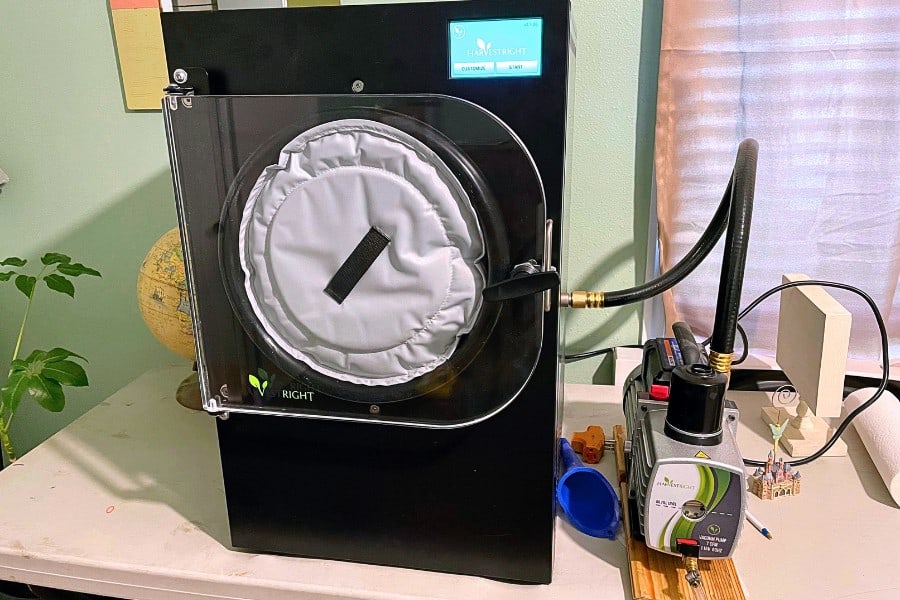
If you’re thinking of buying a home freeze dryer the first thing to look at is the initial cost. Harvest Right freeze dryers come in various sizes, each with its own set of features and pricing.
How much does a Freeze Dryer Cost?
- Small freeze dryer cost: $2295
- Medium freeze dryer cost: $2895
- Large freeze dryer cost: $3595
- Extra-large freeze dryer cost: $4995
(See specifics on Harvest Right’s website)
Below is a table that outlines the key specifications and starting prices for different sizes of home freeze dryers:
| Harvest Right Freeze Dryer Size | Fresh Food Per Batch (lbs.) | Fresh Food Per Year (lbs.) | Tray Space (sq. inches) | Dimensions (H x W x L) | Weight (lbs.) | Starting Price (USD) |
|---|---|---|---|---|---|---|
| Small | 6-10 | Up to 1800 | 434 | 25″ x 16.5″ x 18.5″ | 91 lbs. | $2295 |
| Medium | 10-15 | Up to 3000 | 675 | 28.5″ x 18″ x 21.25″ | 119 lbs. | $2895 |
| Large | 18-27 | Up to 5000 | 1107 | 30.37″ x 20.25″ x 23.75″ | 143 lbs. | $3595 |
| X-Large | 40-50 | Up to 10,000 | 2251 | 35.6″ x 33.7″ x 23.25″ | 258 lbs. | $4995 |
Key Takeaways:
- Size Matters: The size of the freeze dryer you choose will directly impact how much food you can process in a single batch and over the course of a year.
- Space Requirements: Consider the dimensions and weight of the unit to ensure it fits in your designated space.
- Price Range: Starting prices range from $2295 for a small unit to $4995 for an X-Large unit.
- Weight: The weight of the freeze-dryer machine could be a factor if you plan to move the unit.
- Tray Space: The tray space varies significantly between sizes, affecting how much food you can freeze-dry at once.
Knowing these factors helps you decide if a home freeze dryer is worth the cost for you.
Practical Cost Analysis
To see if buying a freeze dryer is worth it, let’s figure out how many meals you need to make to cover the cost. If a meat meal costs $3.50 and a vegetarian meal costs $1.50, you’ll need to make about 430 meat meals or 330 vegetarian meals to pay off the freeze dryer. Since one cycle makes eight meals, the freeze dryer will last long enough to save you money.
Freeze Dryer Cost Calculator
This calculator helps you estimate the cost and potential savings of investing in a freeze dryer. By inputting your initial investment, the cost of prepackaged and DIY freeze-dried meals, as well as any additional running costs, you can calculate your monthly savings and the time it will take to recoup your investment. Adjust the numbers to fit your specific situation and see if a freeze dryer is a worthwhile investment for you.
Results:
If you are interested in a home freeze dryer, see current deals on Harvest Right’s freeze dryers today.
Freeze-Dried Food Costs (DIY vs. Prepackaged Meals)
Comparing the cost of store-bought freeze-dried meals to making my own was a key factor in deciding if I’d get my own home freeze dryer. Let’s break down the costs and benefits to help you make an informed choice.
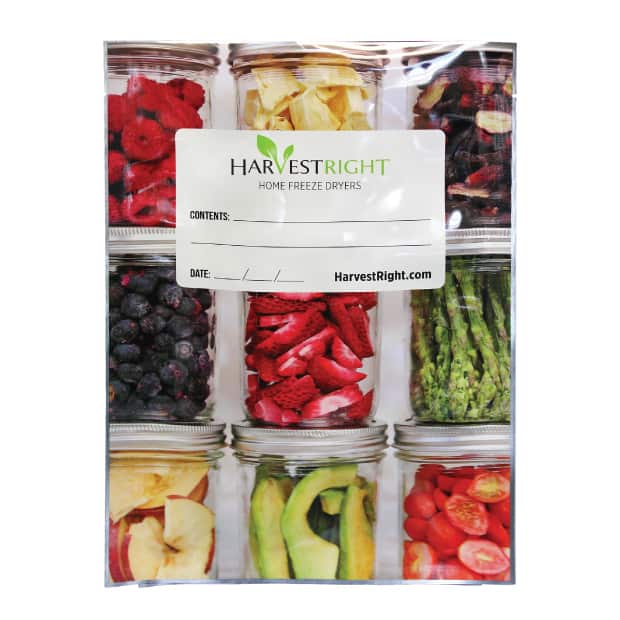
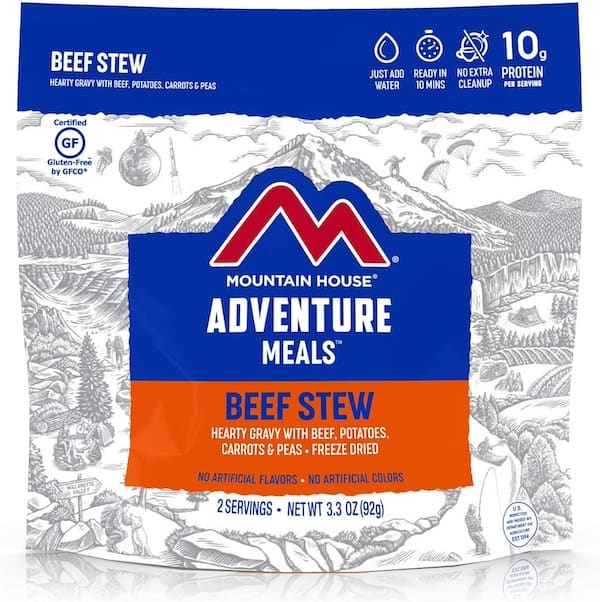
Quick Cost Comparison Table
| Criteria | Prepackaged Meals (Avg.) | DIY Freeze Drying (Avg.) |
|---|---|---|
| Meal Type | Omnivore / Vegetarian | Omnivore / Vegetarian |
| Cost per 4-ounce Meal | $9.93 / $9.80 | $3.50 / $1.50 |
| Additional Costs | Taxes, Shipping | Spices, Herbs, Sauces |
Key Takeaways:
- Prepackaged Meals: Around $10 per 4-ounce meal.
- DIY Freeze Drying: $3.50 for omnivores and $1.50 for vegetarians per 4-ounce meal.
- Additional Costs: Taxes and shipping for prepackaged, spices and herbs for DIY.
Cost Comparison: Prepackaged vs. DIY Freeze-Dried Meals
To compare the cost of store-bought and homemade freeze-dried meals, you need a starting point. Commercial freeze-dried meals often serve as a reference point. I’ve found that, on average, a two-serving package from a well-known brand like Mountain House costs around $15. This equates to about $10 for a 4-ounce (110g) meal which is enough to feed a 34-year-old male like me.
Yet, if you’re considering making your own freeze-dried meals at home, the cost can vary based on the ingredients you choose. To provide an estimate, I looked at the prices of staples like beef, chicken, pasta, and vegetables. On average, the cost for omnivore meals comes to about $3.50 per meal, while vegetarian options are even more economical, at approximately $1.50 per meal.
| Criteria | Prepackaged Freeze-Dried Meals | DIY Freeze-Dried Meals |
|---|---|---|
| Initial Investment | $0 (No equipment needed) | $2,000 – $5,000 (Freeze dryer cost) |
| Average Cost per Meal | $9 – $15 (Depending on brand and type) | $1.50 – $3.50 (Depending on ingredients) |
| Electricity Costs | $0 (No additional cost) | Varies (Based on local rates and freeze-dryer efficiency) |
| Time Investment | Minimal (Just add water) | Significant (Prep, freeze-drying, and packaging) |
| Customization | Limited (Fixed recipes) | High (Choose your own ingredients) |
| Nutritional Value | Varies (Based on brand) | High (You control the ingredients) |
| Shelf Life | Up to 25 years | Up to 25 years |
| Emergency Preparedness | High (Ready-to-eat) | High (Customizable stockpile) |
| Total Cost per Meal | $9 – $11 + Taxes & Shipping | Ingredient cost + Electricity + Time Value |
Key Takeaways:
- Initial Investment: The DIY column should include a note that the initial investment gets amortized over time, reducing the per-meal cost the more you use the freeze dryer.
- Time Value: For DIY, consider adding a monetary value for the time spent on the freeze-drying process, especially if you’re comparing it to other income-generating activities.
- Bulk Savings: Mention that buying ingredients in bulk for DIY can further reduce the cost per meal. Also, buying pre-packaged freeze-dried meals in bulk from Mountain House or other companies can save per mail as well.
- Prepackaged Meals: The average cost is around $10 per 4-ounce meal or 500-calorie meal.
- DIY Freeze Drying: The average cost is $3.50 for omnivores and $1.50 for vegetarians per 4-ounce meal.
- Extra Costs: Prepackaged meals may have extra costs like taxes and shipping, while DIY meals may have additional costs for spices, herbs, and sauces.
Detailed Cost Comparison
Prepackaged Freeze-Dried Meals
The cost of freeze-dried food can vary depending on the type of food, the brand, and the retailer. However, in general, freeze-dried food is more expensive than fresh food (see the best freeze dried food for any circumstance).
There are several reasons for this. First, freeze-drying is a relatively expensive process. Second, freeze-dried food is often considered to be a luxury item. Finally, freeze-dried food is often marketed to people who are looking for a convenient and healthy way to eat.
If you are considering buying freeze-dried food, there are a few things you can do to save money.
- Compare prices from different retailers.
- Look for sales and discounts.
- Consider buying in bulk.
Average Cost
- Omnivore Meals: Around $9.93 per 4-ounce meal or $10.17 per 500-calorie meal.
- Vegetarian Meals: Approximately $9.80 per 4-ounce meal or $10.45 per 500-calorie meal.
Brand Variability:
The cost varies significantly between brands, with no clear pattern. For instance, a Mountain House Classic Beef Stroganoff meal costs $15, while a vegetarian Pad Thai from Backpacker’s Pantry is $10.
Extra Costs:
Don’t forget to account for taxes and shipping, which could push the average cost closer to $11 per meal.
DIY Freeze Drying
To make your own freeze-dried meals, you will need a freeze-dryer. You can purchase a freeze dryer online or at some specialty stores. Once you have a freeze dryer, you can start experimenting with different recipes.
There are many resources available online that can help you get started with making your own freeze-dried meals. You can also find recipes in cookbooks and magazines.
Making your own freeze-dried meals is a great way to save money and eat healthily. It is also a fun and rewarding project that the whole family can enjoy.
Average Cost:
- Omnivore Meals: Around $3.50 per 4-ounce meal.
- Vegetarian Meals: Approximately $1.50 per 4-ounce meal.
Ingredient Costs:
Tomatoes cost about $2.29 per pound and corn is $1.50 per pound. So, a vegetarian meal is much cheaper.
Extra Costs:
Spices, herbs, and sauces are extra but generally minimal. These could add a few cents to the overall cost per meal.
Homemade meals come out significantly cheaper than their commercial counterparts.
If you are interested in a home freeze dryer, see current deals on Harvest Right’s freeze dryers today.
Operational Costs of Running a Freeze Dryer
When it comes to running a home freeze dryer, there are two main costs to consider: electricity and pump oil. Let’s break down each one to give you a clear picture of what you’re getting into.
Electricity Costs
Electricity is the primary operational cost you’ll encounter. On average, a home freeze-dryer uses about 20 kWh of electricity per run. With the national average electricity rate being $0.104 per kWh, you’re looking at around $2.08 per run.
Now, let’s put that into perspective. A typical run can produce about 8 meals. So, the electricity cost per meal comes down to roughly $0.26.
Pump Oil Costs
Pump oil is another operational cost, but it’s relatively minor in the grand scheme of things. The oil is essential for the freeze-dryer’s vacuum pump, but it doesn’t significantly impact the overall cost per meal. For the sake of this discussion, we’ll focus mainly on electricity.
Operational Cost Summary
Here’s a quick table to summarize the operational costs:
| Cost Type | Average Cost Per Run | Cost Per Meal |
|---|---|---|
| Electricity | $2.08 | $0.26 |
| Pump Oil | Minimal | Negligible |
Long-Term Savings: Bulk Buying and Reducing Food Waste
When I first got my home freeze dryer, I was skeptical about the cost. But then I started buying ingredients in bulk and freeze-drying foods that were about to expire. Trust me, the savings add up. I’ve cut down my food waste to nearly zero and saved hundreds of dollars in the process.
I also make the most of owning a freeze-dryer by freeze-drying leftovers. By doing this regularly I am able to prevent wasting excess food and it stores safely for years.
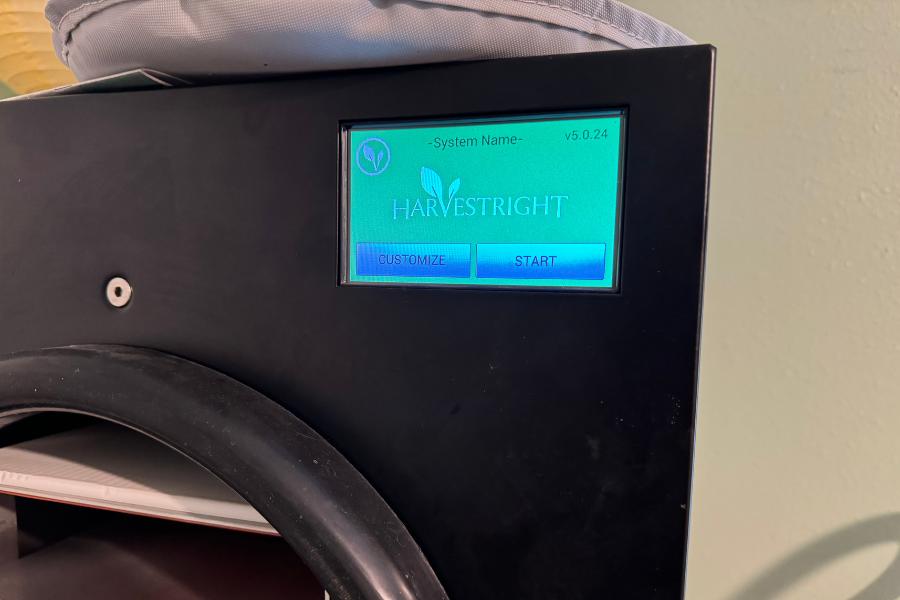
Quality and Customization: How I Took Control of My Diet
I can’t emphasize enough how much I love the customization aspect. I have specific dietary needs, and being able to control every ingredient that goes into my meals has been liberating. I’ve created freeze-dried meals that suit my nutritional goals, and they taste great too!
I also like dehydrating certain foods but often prefer to to use my freeze dryer over my dehydrator (see the difference between freeze drying and dehydrating food). I prefer the texture and quality of freeze dried food over dehydrated food (Is freeze dried food healthy?).
Emergency Preparedness: Peace of Mind
Living in an area prone to natural disasters, having a stockpile of freeze-dried food gives me incredible peace of mind. I’ve built up an emergency food supply that’s diverse and long-lasting. It’s not just for “what if” scenarios; I’ve actually had to dip into it a couple of times during power outages.
Cons of Owning a Home Freeze Dryer: Lessons I’ve Learned
Considering everything, a home freeze dryer doesn’t make sense for everyone. Consider the following:
- Initial Cost: I had to save up for a while to afford my freeze-dryer, and it was a significant investment.
- Space: I had to rearrange my garage to make room for this machine.
- Time Commitment: It took me a few tries to get the hang of the process, and it does require a chunk of time, especially in the beginning.
Is It Worth It? My Honest Take
So, is a home freeze dryer worth it? For me, absolutely. The initial costs and time commitment were hurdles, but the long-term savings, quality of food, and peace of mind have made it invaluable. Also, the fact that freeze-dried food is shelf stable for up to 25 years adds additional value. Your situation might be different, but if you weigh the pros and cons carefully, you’ll be able to make a decision that’s right for you.
A Home Freeze Dryer IS worth it for you if:
- You’re interested in preserving your own food with a 25-year + shelf life
- You want to have a reserve food supply that you can use that still tastes good (similar to when it was fresh)
- You want to preserve food that keeps about 97% of its original nutritional value
- You have the available funds to invest in food storage, backpacking meals, snacks, and more
- You have space to store freeze-dried food in your pantry, closet, cold storage, garage, or other areas
- You want to have shelf-stable food that can last up to 25 years or longer
- You want to store leftover meals for longer
A Home Freeze Dryer may NOT be worth it for you if:
- You don’t plan on using it regularly
- You don’t have any room to store extra food
- You don’t have enough room to store the freeze dryer
- You don’t have access to fresh produce and other foods
- You have to go into debt to buy one
The Verdict
Deciding to buy a home freeze dryer depends on how much you’ll use it and your long-term plans. If you think you’ll make 300-400 freeze-dried meals in the next 10 years, it’s a good buy.
If you are interested in a home freeze dryer, see current deals on Harvest Right’s freeze dryers today.
In short, home freeze-dryers can save you money and let you make tasty, long-lasting meals. We’ve covered all the costs to help you decide if it’s right for you. Whether you love backpacking or want to be prepared for emergencies, a home freeze-dryer is a useful tool.
Frequently Asked Questions
The cost of a Harvest Right home freeze dryer ranges from $2,300 to $5,000 depending on the size which ranges from small to extra large.
Yes, electricity costs can add up, averaging around $1 to $3 per batch. Maintenance is minimal but may require occasional gasket or filter replacements.
It usually takes 20 to 40 hours to freeze-dry a batch of food, depending on the type and quantity.
Advantages: Longer shelf life, retains nutritional value, and rehydrates well.
Disadvantages: High upfront cost and longer processing time compared to other methods.
Freeze-dried food can last up to 25 years if properly sealed and stored in a cool, dry place.

